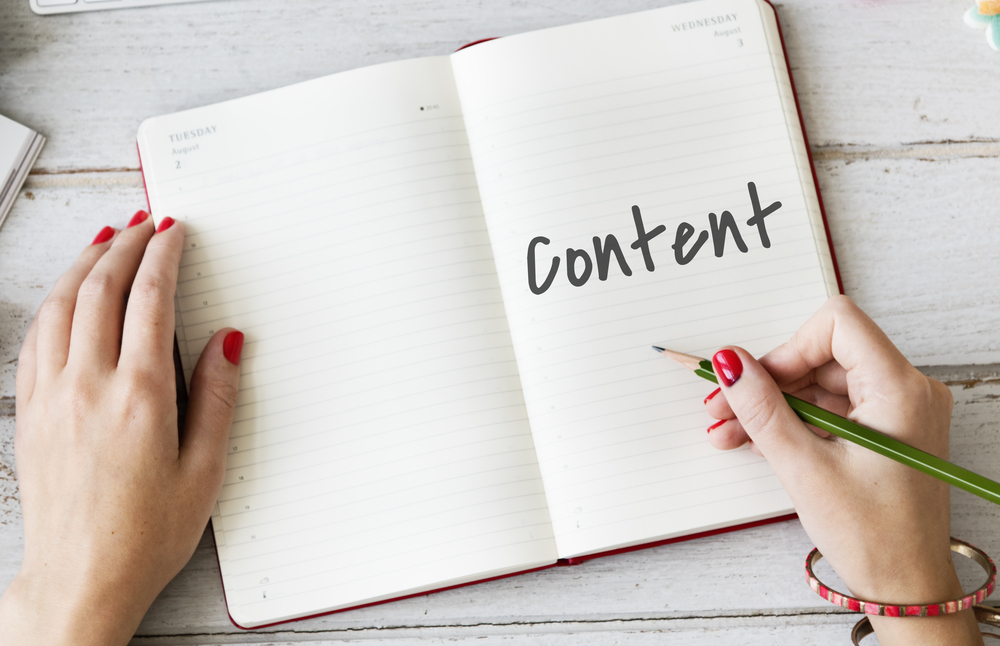
Mapping your content to the buyer’s journey
So you’ve decided that your business could benefit from content marketing. Or maybe you already have a blog, and you’re diligently producing content, but you aren’t sure if it’s doing any good, and your site visitors don’t seem to be clicking on your CTAs.
Recognizing the value of content marketing is an important first step, but simply writing content isn’t enough. In order for your content to drive action on your site and capture leads, it needs to speak to each user according to where they are in their decision-making process — a process that’s also known as the buyer’s journey.
We talked about the buyer’s journey a little bit when we discussed how to come up with blog topics. In this post, we’ll go a little deeper into how to develop content that speaks to users in each stage of the buyer’s journey.
When developing content, it’s important to understand why you’re writing, and for whom. You need to understand your personas — their goals, their pain points, and the information they’re seeking in order to help them make a decision. This information will differ depending on which stage of the buyer’s journey they fall into: awareness, consideration, or decision.
Gearing your content towards each stage of the buyer’s journey not only helps drive action on your site, it can also have a direct impact on your search engine optimization. Google’s objective is to deliver the most relevant content to each user based on their search query. The more you understand the needs of your personas, the better you can develop content that answers their questions and addresses their pain points, which makes your content more likely to show up in SERPs (search engine results pages).
Writing content for each stage of the buyer’s journey
With a solid content marketing strategy, you can nurture leads all the way through the buyer’s journey until they are ready to make a purchase decision. Following is a look at how content works at each of the various stages:
1. Awareness
In this initial stage, the buyer recognizes that they have a need or a pain point, and they begin to search for possible solutions. The length of this stage can depend on several factors, including how urgent the need is, your industry, and the cost of possible solutions to their problem. It’s important to remember that visitors in this stage are not interested in a sales pitch.
During the awareness stage, content should help users identify their problem and show them the benefits of taking action. Get them to commit to change. For example, if you manage a cosmetic surgery practice, your content at this stage may discuss the social and psychological benefits of changing whatever it is they don’t like about their appearance. Help them recognize the problem that is bothering them and motivate them to do something about it.
Types of awareness stage content
When it comes to gearing content towards different stages of the buyer’s journey, the format of your content is less a factor than the topic. Whitepapers, e-books, infographics, videos, fact sheets, research studies, and blog posts can all address the pain points the user is experiencing at this stage. The important thing to remember is to answer the relevant questions. Some examples for a cosmetic surgery practice could include:
- How can I get rid of stretch marks?
- How can I get curvier hips?
- How can I lose weight in my thighs?
Draw users to your site with awareness-stage content in the form of blog posts or other non-gated content, and then capture their contact information with a downloadable offer that provides more information about their area of interest.
2. Consideration
At this stage, the user is considering different solutions or approaches to their problem. They know they want to take action, but they aren’t sure which solution best meets their needs. They’re still not ready to buy, so no sales pitches yet. You can, however, start to introduce the benefits of your products or services, as long as you are presenting information that will help them make a decision.
Types of consideration stage content
At this point, the user is looking at differentiators and comparison information. Show them how various approaches can address their pain points. This can still be done through e-books, videos, blogs, and infographics. You can also start to offer content such as comparison charts, guides, and case studies to demonstrate the benefits of your services.
3. Decision
In this final stage, the buyer has decided on a solution and is looking to justify their purchase decision. They may be researching different providers and comparing costs. Here the user is looking for more specific information or, when applicable, free trials.
If your content has done a good job of guiding users through the first two stages, they should now be ready to choose a solution that addresses their pain point. Now you just have to convince them that your product is the one that best meets their needs.
Types of decision stage content
During this stage, you can show the buyer more specific information about yourself and your business. Depending on your industry, you may offer testimonials from other clients or patients, before and after photo galleries, coupons, free trials or product demonstrations, detailed case studies, or product comparison information.




